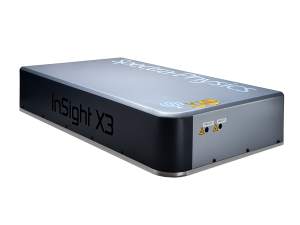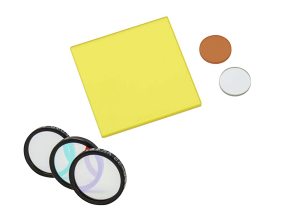Advanced Bioimaging
Image Complex Cellular Processes at the Single Molecule Level
Several laser-scanning microscopy techniques have been developed in the last twenty years based on non-linear optical phenomena. This has led to a variety of powerful imaging tools, such as two-photon excited fluorescence microscopy (TPM), second harmonic generation (SHG) microscopy, and coherent anti-Stokes Raman scattering (CARS) microscopy. The advantages these novel techniques present versus conventional microscopy methods have enabled great developments in biological imaging, especially in thick tissue and live animal studies.
The common denominator of these techniques, which can be grouped in the family of multiphoton microscopy (MPM), is the non-linear dependence of the signal with the intensity of the excitation light. Some of the consequences of this phenomenon are the localization of signal within a femtoliter volume, the reduction of photodamage in out-of-focus planes, and the ability to excite areas hundreds of microns deep within samples.
While microscopy by SHG and CARS has shown great potential in biological imaging because extrinsic fluorescent molecules are not required for signal generation, TPM thus far has seen wider use. The discovery of the Green Fluorescent Protein has further increased the imaging capabilities of TPM. By fusing auto-fluorescent proteins to proteins of interest, TPM can perform imaging of complex cellular processes down to the single molecule level.
Two-Photon Absorption
A molecule in a ground electronic state can be promoted to an excited vibronic state if it absorbs a photon with energy matching the energy gap between the two states. After relaxing to the lower vibrational state, the molecule will return to the ground electronic state emitting a lower energy photon than the one absorbed. This is the basis of onephoton excited fluorescence. The difference in frequency between the photon absorbed and the photon emitted is called the Stokes shift.
The same process can occur by quasi-simultaneous absorption of two lower energy photons via short-lived virtual states, if the energy sum of the two photons is enough to reach the first excited electronic state. In this case, the probability of absorption is proportional to the intensity squared of the excitation light.
Two-photon absorption is a rare event. In order to increase its probability, intense sources of light are required. It is not surprising then that the first experimental evidence of two-photon absorption occurred after the invention of lasers that provided sufficient photon densities in collimated beams.
Coherent Anti-Stokes Raman Scattering
Coherent Anti-Stokes Raman Scattering (CARS) was first reported in 1965 by Maker and Terhune as a method of spectroscopy for chemical analysis. CARS involve the interaction of four waves designated as pump (p), Stokes (s), probe (p’) and anti-Stokes (CARS) where pump and probe are usually fixed to the same frequency (vr = vr9). If the frequency difference between the pump and Stokes waves matches the vibrational transition VR of the sample (i.e. VR=vr–vs), CARS provides chemical selectivity due to a resonant enhancement of the third-order nonlinear signal. Being a coherent spectroscopy, the information content of CARS is the same as that of Raman spectroscopy. The main difference is that CARS is a four-wave mixing process that generates a coherent collimated directional beam with several orders of magnitude higher intensity, where the wavelength is blue-shifted with respect to the pump and Stokes beams. Also in a noncollinear geometry under proper phase matching conditions, the CARS beam propagates in a different direction. All of these factors simplify detection of the CARS signal.








 Ultra-High Velocity
Ultra-High Velocity